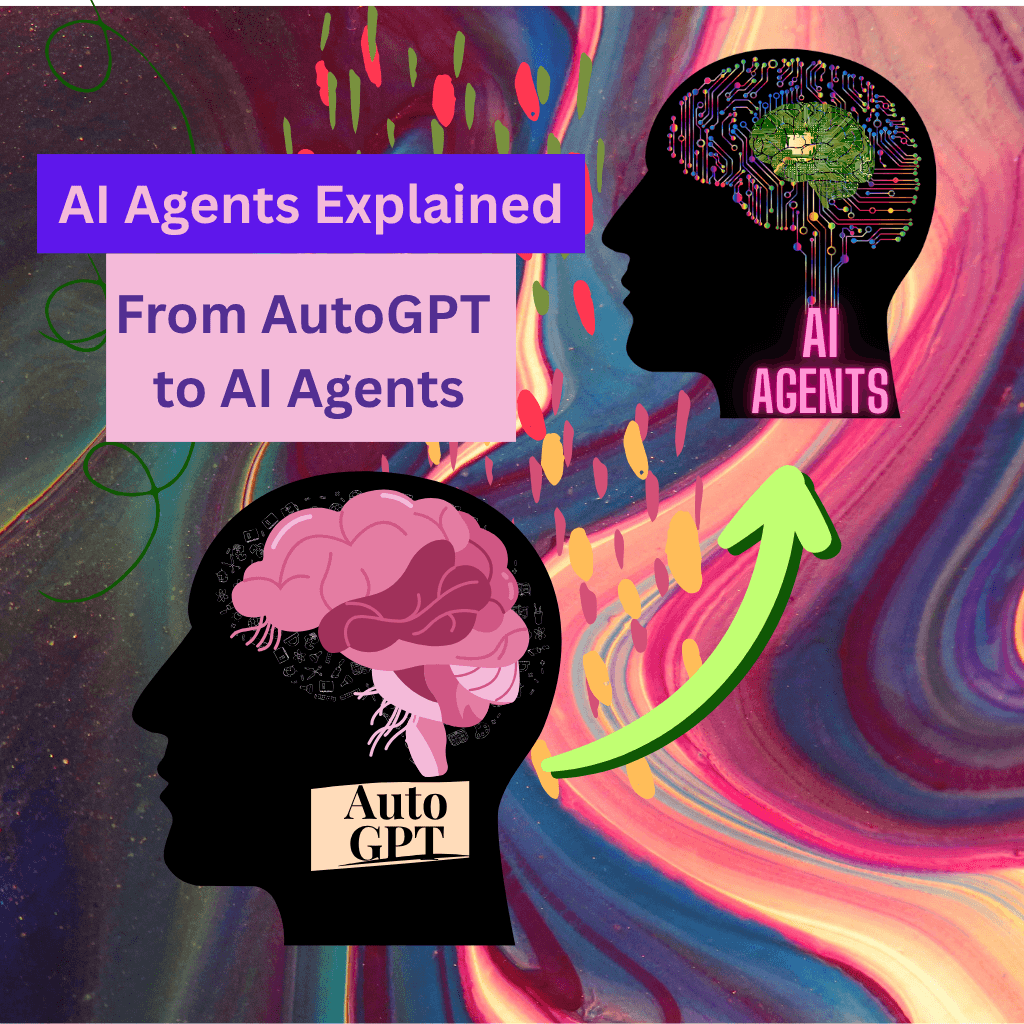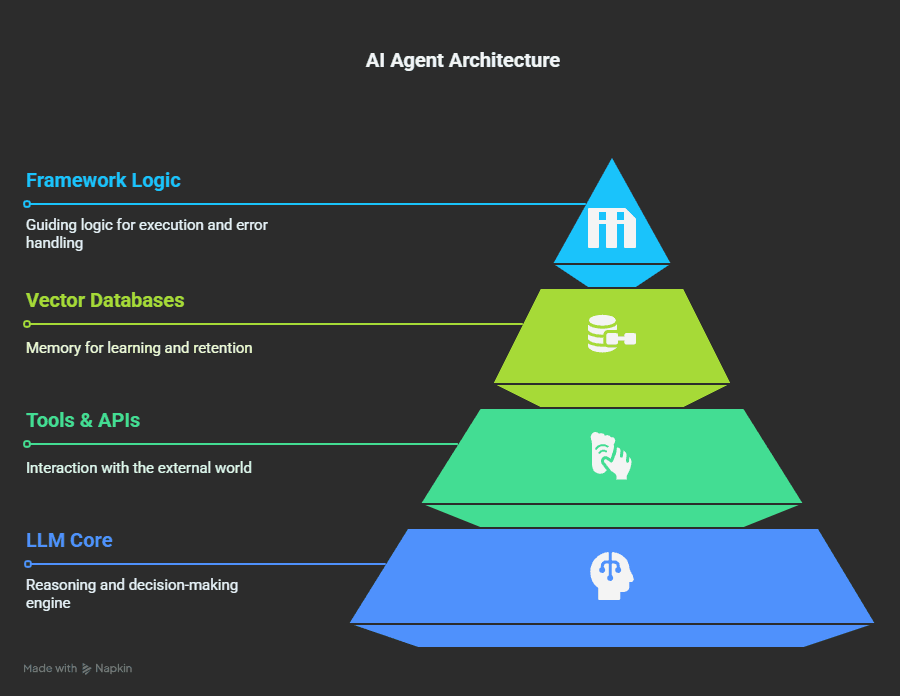Do you remember the incredible buzz around “AutoGPT” back in 2023? For a few weeks, it felt like we were witnessing the dawn of a new era. Social media was flooded with videos of an AI that could seemingly think by itself, create its own tasks, browse the web, and work towards a goal without constant human interference. It was a thrilling glimpse into the future of Artificial Intelligence.
In this guide you will find AI agents explained using AutoGPT as our starting point. We’ll explore how they actually work, the challenges they faced, and how the concept has matured into the powerful AI agent framework landscape we see today.
Then, the initial hype of AGI (Artificial General Intelligence) faded. The world didn’t get taken over by armies of autonomous agents. So, what happened?
The truth is far more interesting. While AutoGPT itself had its flaws, the powerful idea behind it didn’t disappear, rather it evolved. If you’re curious about what AutoGPT was and what it has become, you’re in the right place.
Table of Contents

What Was AutoGPT and Why Was It a Big Deal
At its heart, AutoGPT was an open-source project that aimed to make an AI model like GPT-4 autonomous. Think of it as a “mini-project manager” for the AI.
While you have to give ChatGPT a new instruction for every single step, AutoGPT was designed to prompt itself. This concept is what truly set it apart. You would give it a single, high-level goal, and it would try to figure out all the steps to get there on its own.
This process worked through a simple but powerful “Thought-Action-Observation” loop:
- Goal: You give it a main objective. For example, “Research the top 5 electric cars currently on the market and create a comparison report highlighting their price, range, and key features.”
- Thought: The AI thinks about the very first step. “Okay, to start, I need to use a search engine to find a list of the ‘best electric cars 2025’.”
- Action: It then executes that thought by using one of its available tools, like performing a Google search.
- Observation: It analyzes the results of its action. “The search results show several review articles. I should visit the top 3 links.”
- Next Thought: Based on its observation, it generates the next thought and action. “My next step is to visit the first link and extract the names of the cars mentioned.”
This loop of thought, action, and observation would continue, with the AI autonomously chaining tasks together until (in theory) it achieved the final goal. This ability to self-prompt and course-correct was a revolutionary idea that showed the world the potential of autonomous AI agents.
The Reality Check: The Hype vs The Hurdles of Early AI Agents
As exciting as AutoGPT was, anyone who tried to set it up and run it quickly encountered some significant real-world challenges. To build trust and understand where we are today, it’s important to be honest about these early hurdles.
- The Cost: The “thought” loop required dozens, sometimes hundreds, of separate calls to the GPT-4 API. This meant a single complex task could quickly become very expensive to run.
- Getting Stuck in Loops: Early agents were notorious for getting stuck. They might perform the same web search over and over again or get confused by the information they found, failing to make meaningful progress.
- Reliability Issues: More often than not, the agents would fail before completing their goal. They would “hallucinate” a file that didn’t exist or fail to properly parse information from a website.
The key takeaway for us was clear: AutoGPT was a brilliant and inspiring proof of concept, but it wasn’t yet a reliable or practical tool for most people. It showed us the destination, but the road to get there was still under construction.
You may be interested in knowing about the Top 5 Advanced AI Chrome Extensions
The Evolution: How AI Agents Actually Work
The lessons learned from AutoGPT led to a new wave of development focused on making agents more reliable and structured. A modern AI agent is more than just a clever loop; it’s a sophisticated system with several core components.
Let’s use an analogy. Imagine you’re building a robot to cook a meal. You would need:
LLM– The Brain
LLM (Large Language Model) is the functional core, like GPT by OpenAI, Claude, Gemini, or Llama. It’s the part that does the reasoning, planning, and decision making like a chef deciding on the recipe.
Tools & APIs– The Limbs
An agent without its tools and APIs is just a chatbot. The tools are what allow the agent to interact with the world. This could be a web search tool, a calculator, a code interpreter, or an API (Application Programming Interface) that lets it book a flight or check the weather. These are the robot’s gear like knives, spoons, and stove.
Vector Databases– The Memory
Vector Databases helps an agent remember what it has done and learned, so it doesn’t repeat mistakes. This can be short-term (remembering the last few steps) or long-term (storing key information in a database for future tasks). This is the robot’s ability to remember it has already added salt.
Framework- The Strategic Logic
Framework is the underlying logic that guides the agent throughout the execution process. It helps the agent create a robust plan, execute it, handle errors, and correct its course when things go wrong. This is the cooking methodology the robot follows.

AI Agent Frameworks: The Modern Toolkits
The biggest leap from AutoGPT to today’s agents is the creation of AI agent frameworks.
What is an AI agent framework
It is the professional toolkit or scaffolding for developers. Instead of having to build the entire “robot” (the planning logic, memory system, and tool integrations) from scratch, frameworks provide all these pre-built, high-quality components.
This allows developers to focus on what makes their agent unique—the specific goal and the custom tools it uses—while relying on the framework to handle the complex, underlying mechanics. These frameworks are the reason why building powerful, reliable agents is now more accessible than ever.
Here are a few of the key players you’ll hear about constantly in this space:
- LangChain: The original and most comprehensive framework, known for its vast library of integrations and flexibility.
- LlamaIndex: A framework that specializes in building agents that can work with your own private data, like a chatbot for your company’s internal documents.
- CrewAI: A newer framework that excels at creating collaborative teams of AI agents that can work together to solve complex problems.
Conclusion
So, what happened to AutoGPT? It didn’t disappear; it lit a fire. It was the spark that showed millions of people the incredible potential of autonomous AI. That initial, chaotic experiment has now evolved into a mature and powerful field of study.
The dream of AI that can actively help us achieve our goals is closer than ever, but now it’s being built with more structure, reliability, and power, thanks to the robust frameworks it inspired. The conversation has shifted from a single, hyped-up project to a vibrant ecosystem of powerful tools.
Now that you understand the “why” and “how” behind AI agents, are you ready to see the specific tools you can use to build or try one for yourself today?
You may be interested to know about the 11 Top AI Agent Platforms & Frameworks to use for you project.
